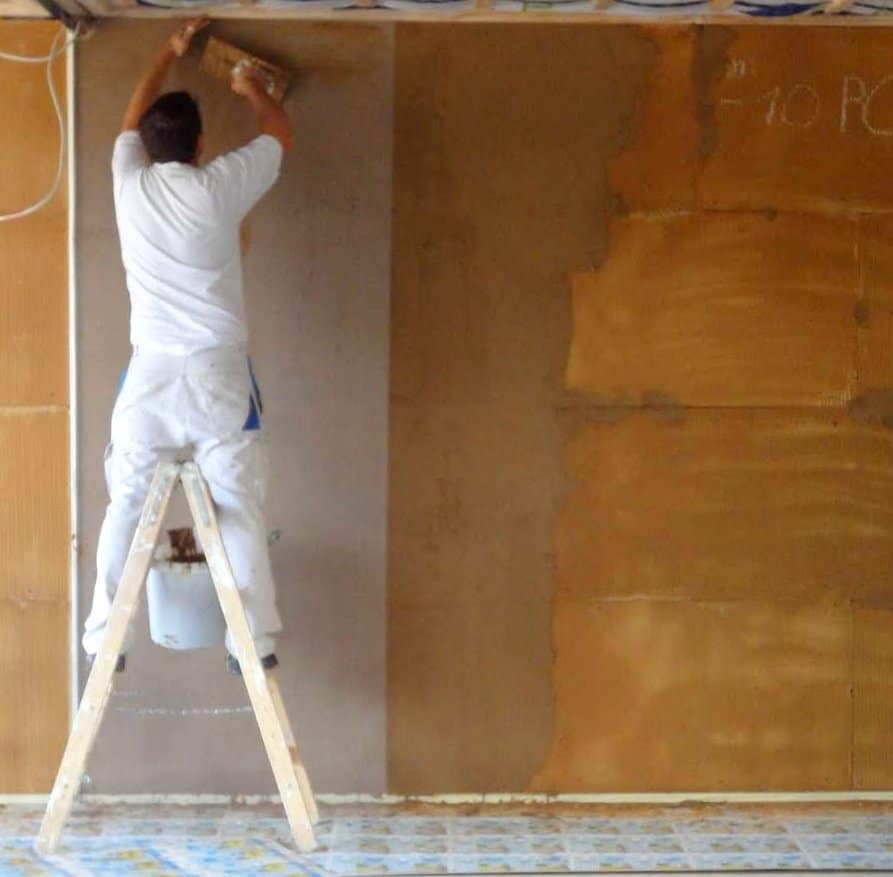SPECIFICATION GENERATOR
Find out which low impact materials are right for your building project.
In Praise of Clay Plaster
In spite of coming from a background of building with clay (cob construction) I have only recently re-visited how this extremely abundant and very sustainable material can help us in the retrofitting of buildings.
A chance conversation with Toby Cambray from Greengauge about a project where they needed to ensure that an internal insulation system applied to the walls could be removed without any trace got me thinking about the use of clay plasters.

One of our main suppliers had always recommended using a layer of clay plaster on the wall before applying their wood fibre internal wall insulation but I had always thought of it as being a little unnecessary and novel for use in our relatively conservative, British market. However, the extremely detailed and reliable hygrothermal modelling software, WUFI, has gained a reputation as being the gold standard for building modelling and it shows very clearly how materials, such as clay plasters, can make a significant difference to the overall performance of insulation systems.
Clay plasters are well known, by those who work with them, to be extremely good at managing and buffering humidity. The structure of clay plasters allows humidity to be adsorbed and desorbed quickly and this process can repeat infinitely without any detriment to the plaster and through using WUFI we can see how incredibly useful they can be.
Using clay plasters as an adhesive coat/parge coat on masonry walls prior to applying wood fibre insulation seems to increase the zone over which interstitial condensation is buffered and helps keep the wood fibre insulation drier. It can make the difference between whether or not a facade impregnating cream is required externally or how thick the insulation can be that is applied internally without moisture risk.
Lime plasters are the norm when applying an adhesive/parge coat to walls prior to applying internal wall insulation and were our preference for many years. However, as WUFI shows, they do not buffer moisture particularly, meaning that any condensation that occurs does so on the surface of the wood fibre insulation.
This load results in very high moisture levels at the surface of the wood fibre board, where it meets the wall or plaster layer, and can result in the surface of the board being at relative humidity (RH) levels of 95% or more for long periods of time. Whilst in the short term this is not usually a problem, keeping the RH levels below 95% would make the system more durable.
Clay plasters generally contain much less embodied energy than lime plasters since the clay is simply dried rather than fired at over 1000°C, as is the case with limes. This makes them a serious option for projects trying to reduce embodied carbon and the impact of buildings more generally. Clay plasters can be re-worked if they’ve dried out too, potentially reducing site waste almost completely.
Finally, clay finish plasters can look beautiful too. We supply brilliant white clay finishes which require no painting and other companies, such as ClayWorks in Cornwall, supply an amazing array of different colours and textures too. Once installed, these plasters, which are notoriously soft, can be hardened by spraying with sodium or potassium silicate, which create surfaces just as hard as any lime plaster, ensuring their longevity.
If you have any questions about how clay plasters can improve your building’s performance and reduce it’s impact, please contact us.
